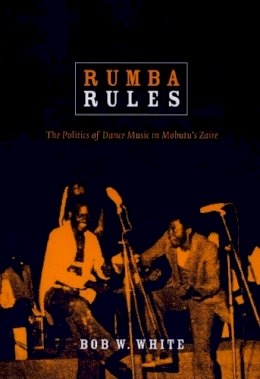
Rumba Rules: The Politics of Dance Music in Mobutu’s Zaire
Bob W. White
Drawing partly on his experiences as a member of a local dance band in the country’s capital city Kinshasa, White offers extraordinarily vivid accounts of the live music scene, including the relatively recent phenomenon of libanga, which involves shouting the names of wealthy or powerful people during performances in exchange for financial support or protection. With dynamic descriptions of how bands practiced, performed, and splintered, White highlights how the ways that power was sought and understood in Kinshasa’s popular music scene mirrored the charismatic authoritarianism of Mobutu’s rule. In Rumba Rules, Congolese speak candidly about political leadership, social mobility, and what it meant to be a bon chef (good leader) in Mobutu’s Zaire.
Product Details
About Bob W. White
Reviews for Rumba Rules: The Politics of Dance Music in Mobutu’s Zaire
Rosita Henry
The Australian Journal of Anthropology
“Rumba Rules: The Politics of Dance Music in Mobutu’s Zaire by Bob W. White should be a welcome addition to the library of any fan of Congolese music. This book has descriptive passages that give a delicious insight into the everyday workings of a modern Kinshasa orchestre. Furthermore there is some fascinating information and research that helps explain how Congolese music sits within the national culture and everyday social life of the Congolese people. The book can be justifiably described as an essential read for anyone wishing to gain an extended appreciation of the Congo, its politics and its quirky obsession with music.”
Martin Sinnock
Beat
“[A] pioneering study of its subject.”
Ted Smith
Montreal Review of Books
“Fascinating, even enthralling.”
Robert Christgau
Barnes and Noble Review
“White's poignant research and heavily-referenced text showcases a rather complex and dynamic musical historiography and ethnography of Zaire's (now Congo's) musicians. . . . [A]n in-depth guide to the music and society of a people transformed and shaped by political policies and pressures. The text contains an extensive notes section, bibliography, small discography, and index. Scholars and students of African music with Congolese interests would benefit most from the text’s information. Yet, it is highly recommended for anyone with an interest in music.”
Matthew J. Forss
Callaloo
